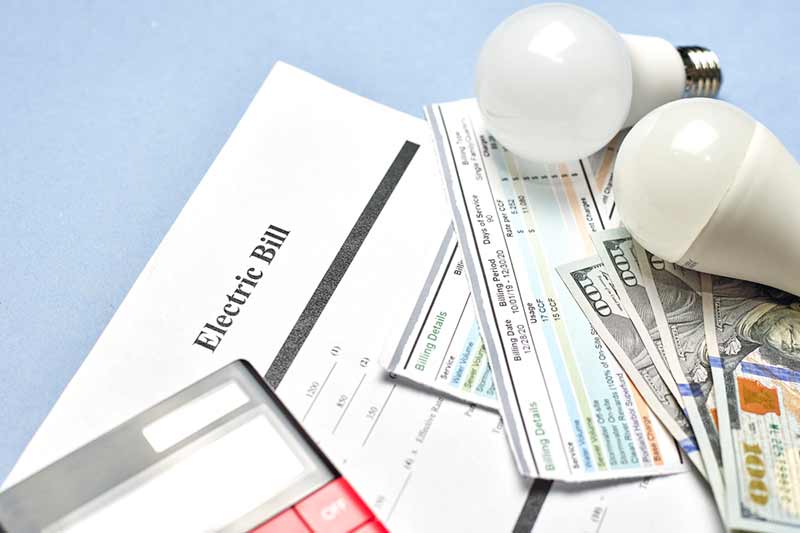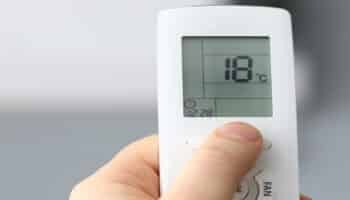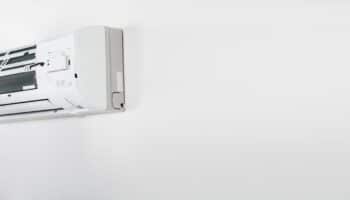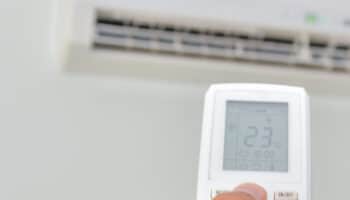Wondering what temperature you should be setting your air conditioner to?
An air conditioner is one of the most expensive appliances in our home. So it’s important to make sure we’re not using it wrong and burning money!
Based on my team’s experience — myself, who’s been covering appliances online for the last seven years, and experts in the HVAC industry — I’ve put together a list of all the best settings for your air conditioner.
Whether you have an air conditioner in your home or office we can help you attain that perfect indoor environment you’re looking for.
The Best Settings for Your Air Conditioner
Most of the following can be applied to whatever type of air conditioner you have in your home. However, a central air system is controlled via a wall thermostat while other types will typically have either an integrated thermostat or a remote control.
Regardless, you can play with the following settings to find something that works best for you and your home.
What Temperature Should Your Thermostat Be Set At?
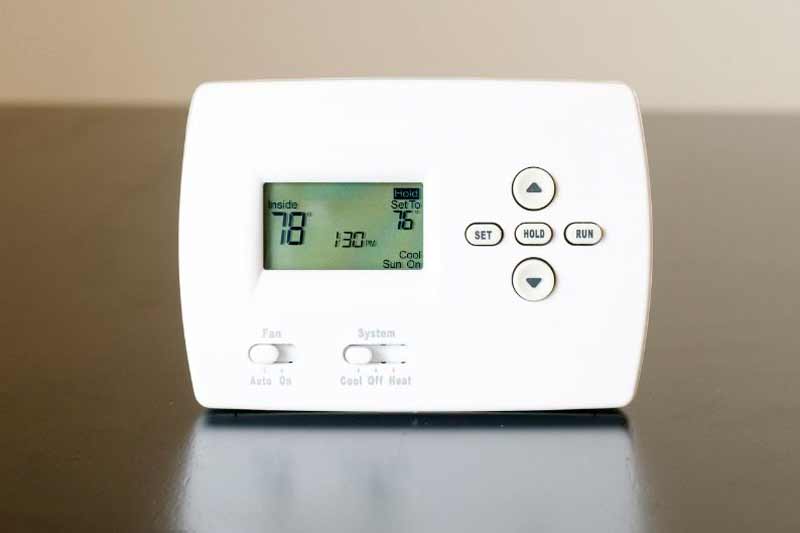
You want your home to be cold so you should set your thermostat at the lowest possible setting, right?
I understand that that’s probably what you want to do sometimes, but for a variety of reasons that’s a bad idea.
First of all, the US Environmental Protection Agency recommends everyone should set their air conditioners to 78 °F (25°C) during the summer if they’re concerned about their utility bills.
But every household needs to balance that out with their own comfort since some might find that far too warm and uncomfortable. However, comfort may not be the only deciding factor. For example, the difference between setting your thermostat at 72°F and 78°F is a cost of about 18% in utilities.
To put that another way, every degree above 72° that you set your thermostat saves 3% on energy costs. So being extra cool is costing you a lot of extra money. Is it worth it? Only you can answer.
One more factor is that some air conditioners — depending on location and climate — only have the ability to handle a 20°F difference between outdoor and indoor temperature. So if it’s 100°F outside, the lowest you can set your thermostat is 80°F, and even then your system will be running at full capacity and costing you a lot of money.
Program a Smart Schedule
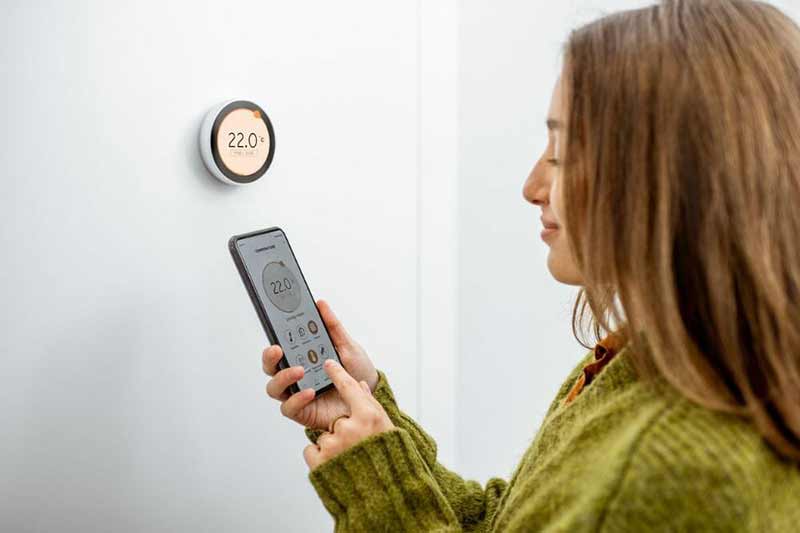
If your air conditioner — whatever type — has a scheduling feature, use it. You may need to do this using a remote, an app, or via the thermostat.
Some air conditioners may allow you to create a truly smart schedule, while others will only provide you with very basic features. Either way, setting a schedule can save you money.
Programming options may include the following:
- 1-week program, which only allows you to set one program
- 5/2-day programs give you one program for the weekend and another for weekdays
- 5/1/1 programming is similar to the above except you can set individual programs for Saturday and Sunday
- 7-day programs allow you to create a unique program for each day of the week
Based on the above, you’ll want to program the following.
- Set a schedule for when you wake — your air conditioner will start cooling before this time so that by your set time your home has reached your desired temperature.
- The next setting is for when you and your family leave for school or work. It’s the temperature your home will be while you’re away from the house.
- The return setting is the temperature you want your home to be by the time you and your family get back from work and school.
- Finally, you’ll choose a sleep setting — a comfortable temperature that will allow you to sleep well.
If your air conditioner runs all day while you’re not at home, you’re simply wasting energy. Having said that, it’s also not the best practice to turn your air conditioner up when you leave in the morning if you’re only going to crank it back down when you get home.
In that scenario, your air conditioner has to work extra hard to deal with the heat buildup in your house, which will typically cost you more than it would’ve to simply have adjusted the temperature during the day.
Use Eco Mode
Before switching to eco-mode, understand how it works. Unlike using the cool or auto settings where you choose your desired set temperature — which your air conditioner will maintain — eco-mode cycles your air conditioner and changes the temperature by a few degrees.
Eco-mode is economic. It’s more about energy savings than comfort — so if comfort is your deciding factor, this may not be the mode for you.
Essentially, what it does is slow down your air conditioners compressor. It uses less energy and creates less wear and tear on the motor. In hand with that, it’s decreasing the cooling capacity of your air conditioner.
Auto Mode

If comfort trumps energy savings, then auto mode may be the right choice for you.
Unlike eco-mode, auto mode will bring your home to the desired temperature while automatically adjusting the fan speed. Some units have a default setting for auto mode which is often 77°F (25°C).
Since auto mode allows the air conditioner to adjust temperature settings as necessary throughout the day, this is the best choice for comfort.
Dry Mode
Whether you have central air, a mini split, or another type of air conditioner, many of them will have a dehumidifier feature or dry mode to help pull moisture out of the air.
If your home is excessively humid and you’d like to switch to dry mode, understand that while your air conditioner is still cooling your home in this setting its primary function becomes dehumidification.
So decide on what’s more important, cooling the air or drying it out.
Fan Mode
Finally, you have the option of running your air conditioner — whichever type — in fan mode. This simply means that only the fan is running, not the compressor. And it’s the compressor that cools your air.
Fan mode is a good option for cooler days when all you really need is some circulation. A lot of newer thermostats have a CIRC feature that will activate the fan for about 10 minutes if a call for cool or heat hasn’t initiated in a predetermined time frame. This will mix the air in the space to have less hot and cold spots.
Conclusion
The best of both worlds would be air conditioner settings that provide the ultimate comfort at the lowest cost. Unfortunately, you’ll often have to choose between comfort and savings.
To recap, here are some of the settings we discussed and the possible benefits to your comfort or energy savings.
- Choosing the right temperature
- Programming a schedule
- Understanding eco-mode
- The benefits of auto mode
- Dry mode
- Fan only mode
Hopefully, you’re able to find the perfect balance for your home. Acceptable comfort at an acceptable cost.
While you’re here, why not check out our related posts below? Perhaps we can help you with something else.

